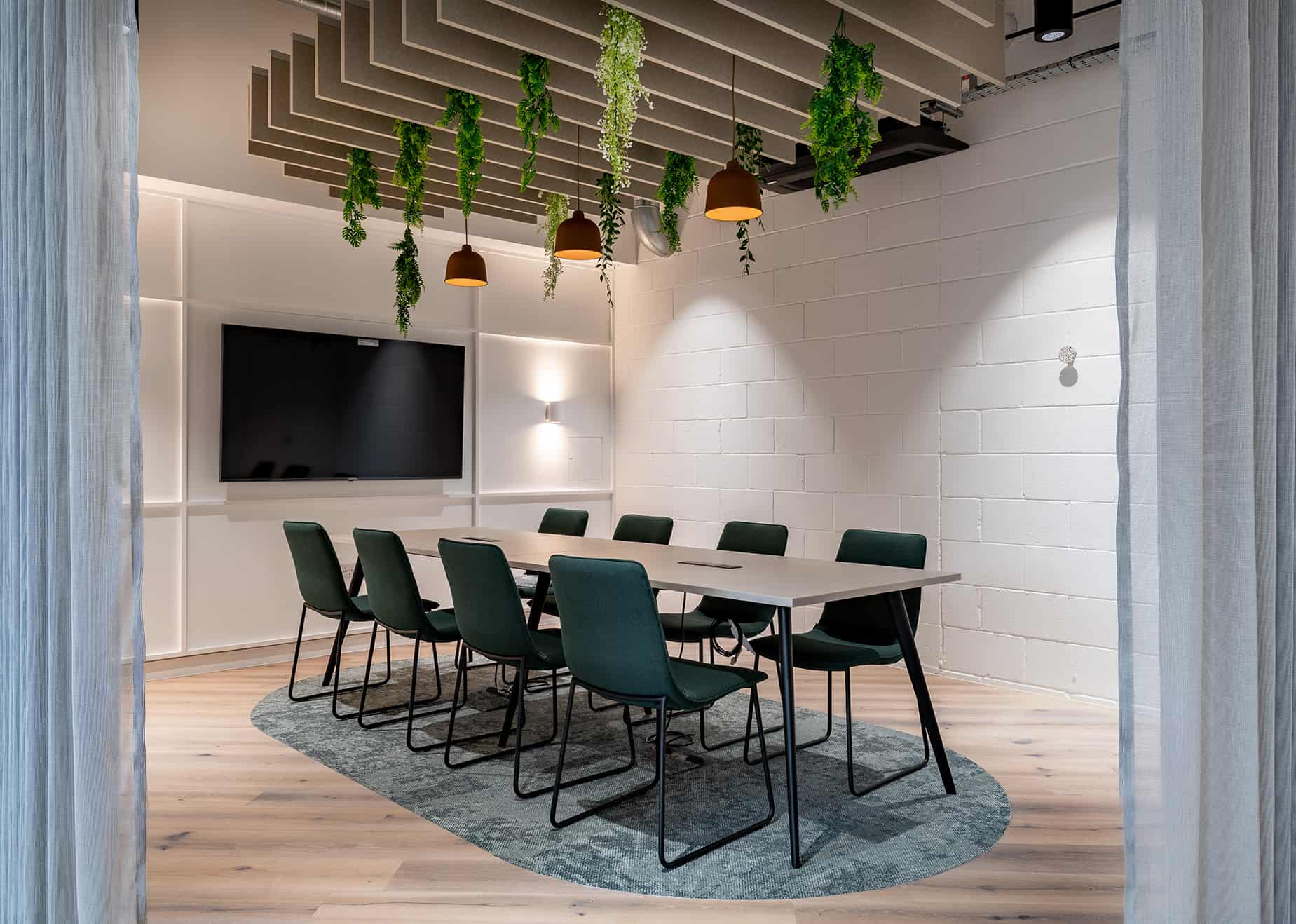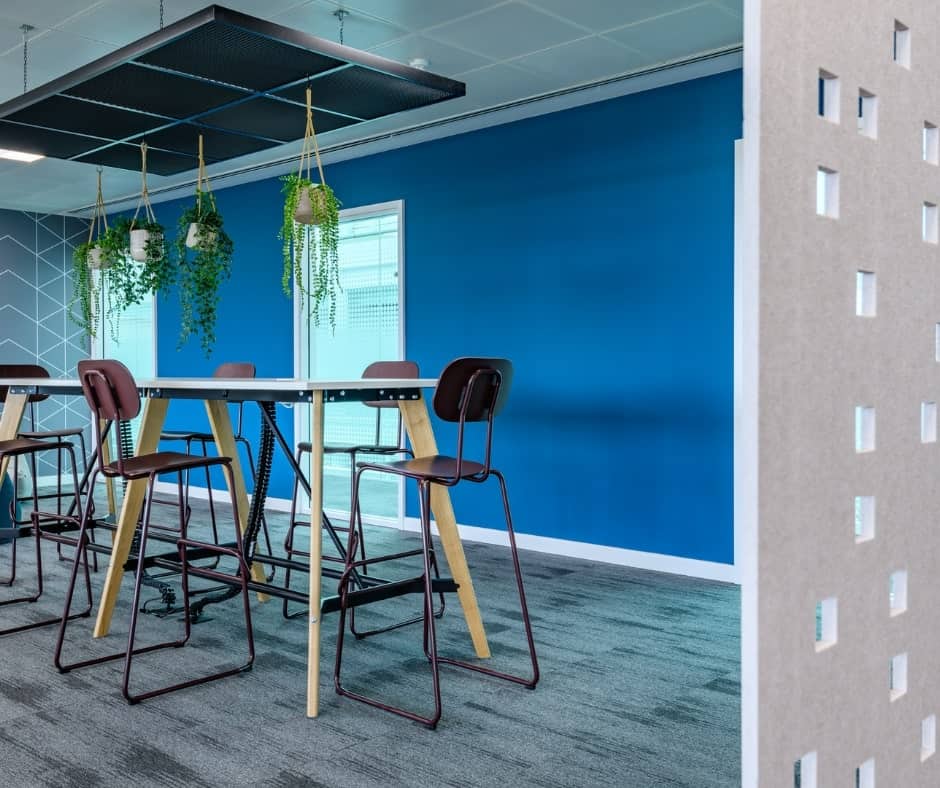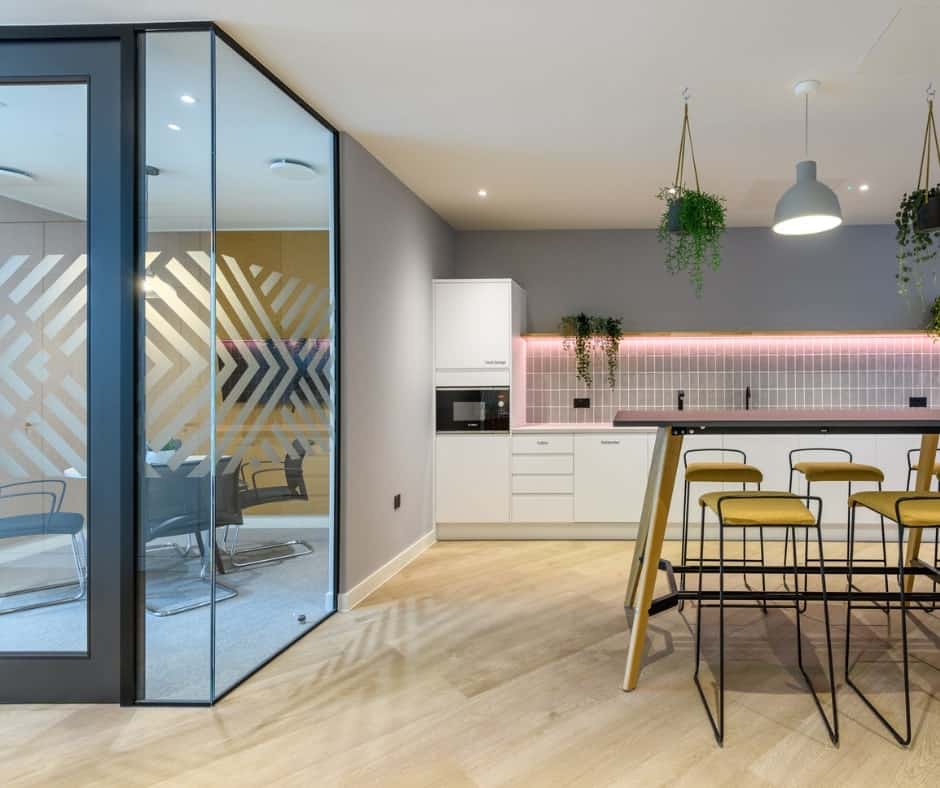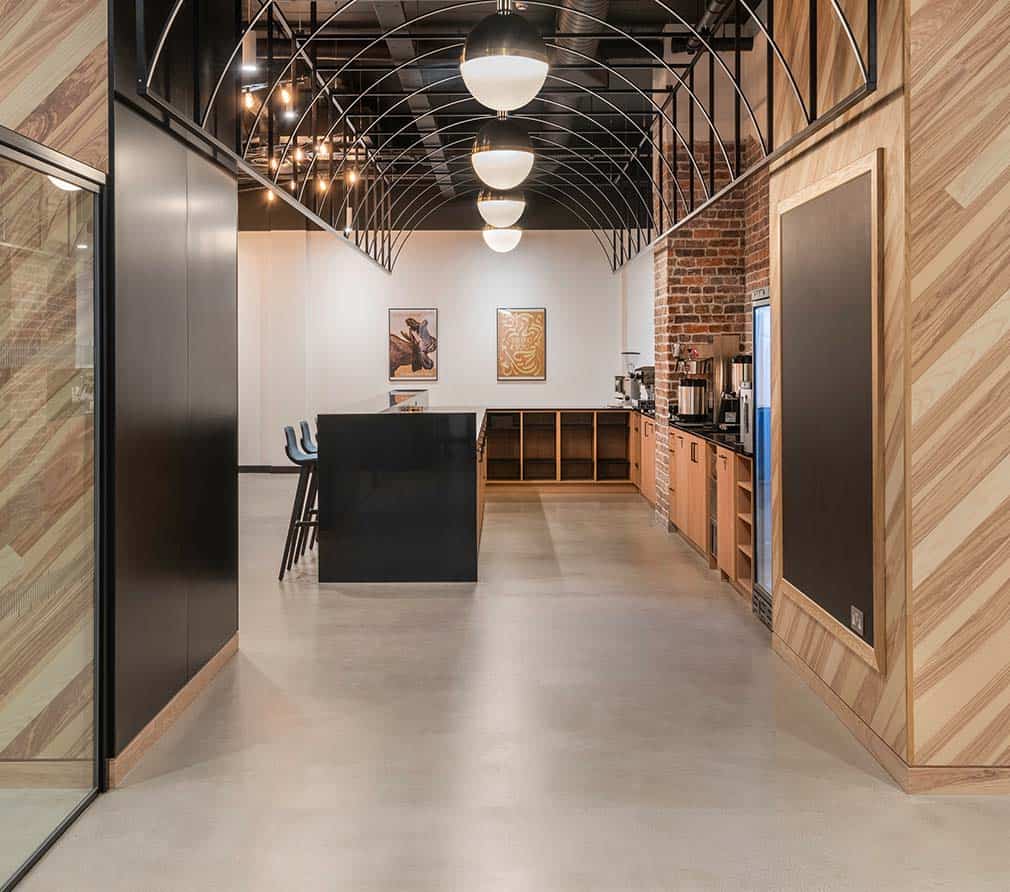Working in the interior fit out industry, we see new office design trends emerging every year, with business owners and landlords on a mission to make their spaces more modern, more enjoyable, more productive, more motivating, and so on and so on.
In 2019 – prior to the pandemic – as fit out contractors we noticed a number of big design trends popping up amongst offices across the country. We saw things like pops of colour to liven up dull and tired spaces and energise teams. We saw the widespread roll out of green offices that created a kind of ‘bring the outside in’ vibe. And we saw how open plan workspaces were gradually being transformed into’ zoned’ areas.
But now that we’re more than a year into the biggest crisis the world has ever seen, trends are changing. This year – 2021 – we’re seeing the emergence of new office interior trends that are certainly as luxurious as ever, but are less urgently focused on productivity and motivation, and more on supporting employees through improved collaboration, hybrid working solutions, sustainability, and productive enhancements.
Drivers of Change
Of course, while 2020 was the start of the remote revolution, the implementation of WFH and hybrid working policies were introduced as emergency responses to an unforeseen situation, and were rarely rolled out in a way that was practicable and sustainable.
Now that we’re more than a year into the ‘new normal’, businesses are now trying to build these new ways of working into not only their processes, but also their office design. And that’s really what’s been the primary driver of 2021’s new – and sometimes unprecedented – luxurious modern office interior design trends emerging today.
Popular Fit Out Solutions for 2021
Of course, interior design is very personal, and we see massively different trends across different organisations, working in different industries, and communicating a different message to their employees, customers, and clients. However, this year we can clearly see a few luxurious trends that are arising out of our adaptation to the ‘new normal’:
Human-Centric Interior Design
It’s no secret that the pandemic has shifted perceptions and priorities, and one of the biggest changes taking place in business today is the move from business-focused to employee-focused operations. This is showing through in office interior design, too.
If you’ve ever seen Maslow’s hierarchy of needs, this explains things nicely. The hierarchy is a pyramid of everything we as humans need to survive, from basic aspects like natural light and fresh air to a feeling of belonging and community. And this is what the emerging human-centric interior design trend is all about: providing employees with the fundamentals they need to feel motivated and work in a productive manner.
Businesses are starting to look at their premises not as offices but more as places which provide home comforts and everyday luxuries which meet employee needs. A great example is the Tenancy Deposit Scheme’s office which is more like walking into someone’s stunning living room than stepping into a business venue. We predict that more refurbishment projects will focus on basic needs and little luxuries this year.
Collaborative Interior Design
The future of the open plan office has been in jeopardy for some time, with many viewing the trend as outdated and incompatible with modern ways of working. But after more than 12 months of social distancing, isolation, and quarantine, we’re seeing more and more businesses redesigning their spaces to rebuild the human connection.
We predict that open plan designs and connected interior trends will get a new lease of life throughout the remainder of 2021, with employers keen to encourage collaboration and communication in what has been a very disconnected, remote world. Over the coming years, as refurbishments become necessary, we’ll see an influx of luxurious, airy, and spacious open plan offices that make interaction the focus.
The concern with this modern office interior trend is that it makes it more challenging to buckle down when needed. But forward-thinkers are already addressing this with innovative interiors. DMH Stallard, for example, has incorporated cushioned fabric and acoustic felt screens to create quiet heads-down zones within its collaborative space.
Sustainable Interior Design
While the Pandemic and sustainability might not be obviously connected, the fact is that the health crisis has undone a huge amount of progress that was being made in terms of making sustainable practices the norm. Single use plastics, for example, are now ‘back in fashion’, and a lot of us are fighting back. This year, both employers and employees are keen to see sustainability built into their working environment interiors.
What we’re seeing in 2021 is growing interest from companies looking to implement more sustainable and responsible interior design into their offices in a modern and luxurious way. Southampton Freight, for example, included shipping containers as part of their design that upcycled industry equipment into eye-catching additions.
We predict that there will be a huge trend for selecting only sustainable materials, furniture, and interior fixtures and fittings to try and counteract the environmental impact of the pandemic over the coming years. We also think they’ll be a renewed focus on British-made products to help reduce interior design’s carbon footprint.
Hybrid-Friendly Interior Design
As restrictions ease and the drive for a return to the office begins in earnest, we’re not seeing workers rush back to work and pretend nothing happened. And it’s easy to see why. The remote working ‘experiment’ was largely successful. Even those organisations that had been against working from home in the past started to see the benefits. Many are happy to empower employees to work from home for at least some of the time.
And so it’s natural that one of the biggest interior design trends we’re seeing today is the inclusion of in-office features that facilitate productivity in a hybrid setup; communicative design applications that make it easier to work seamlessly across two – or even more – locations, and collaborate with colleagues no matter where they are.
A fantastic example can be seen with our work at Southampton’s Old Bond Store, where we recreated the rapidly emerging concept of the co-working space, but with a twist that provided an additional level of privacy without compromising on flexibility. We developed a broad sense of fluidity across the entirety of the building to really promote this idea that there’s no one single way – or one single place – to get the job done.
A Touch of 21st Century Luxury
All of the points we’ve touched on above are sparking a renewed drive for office refurbishments and refits, with businesses across the country looking to adapt their existing interiors to create spaces that nurture employees professionally and personally.
And as one of the UK’s top interior fit out companies, we’re incredibly excited to be a part of this movement, and we’re thrilled to be able to support organisations as they make luxurious changes to maintain stunning office interiors in this ‘new normal’.








